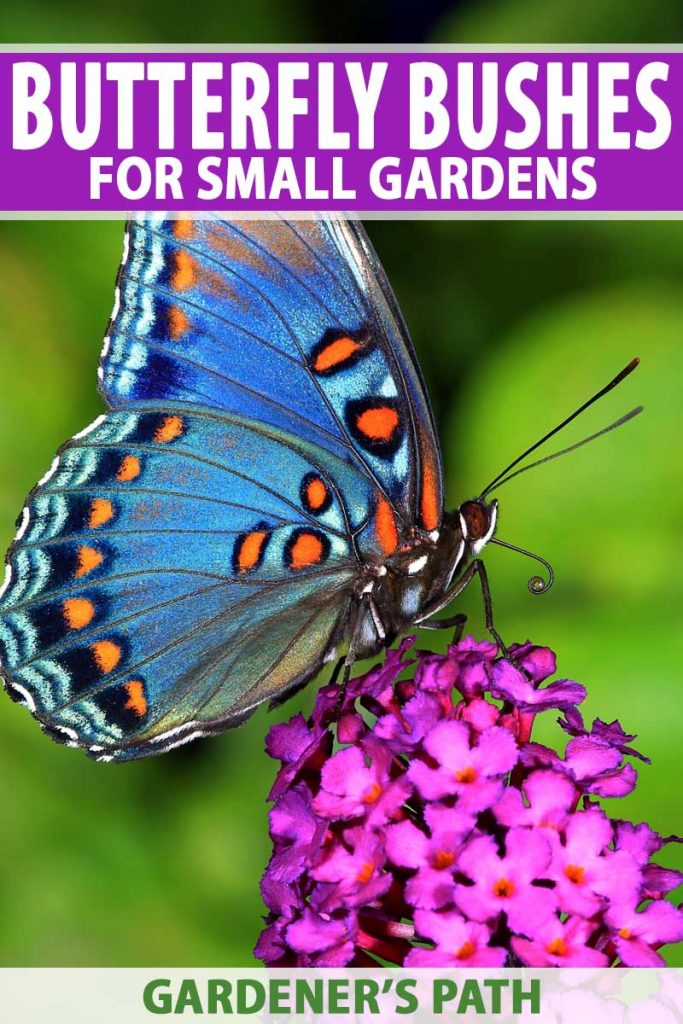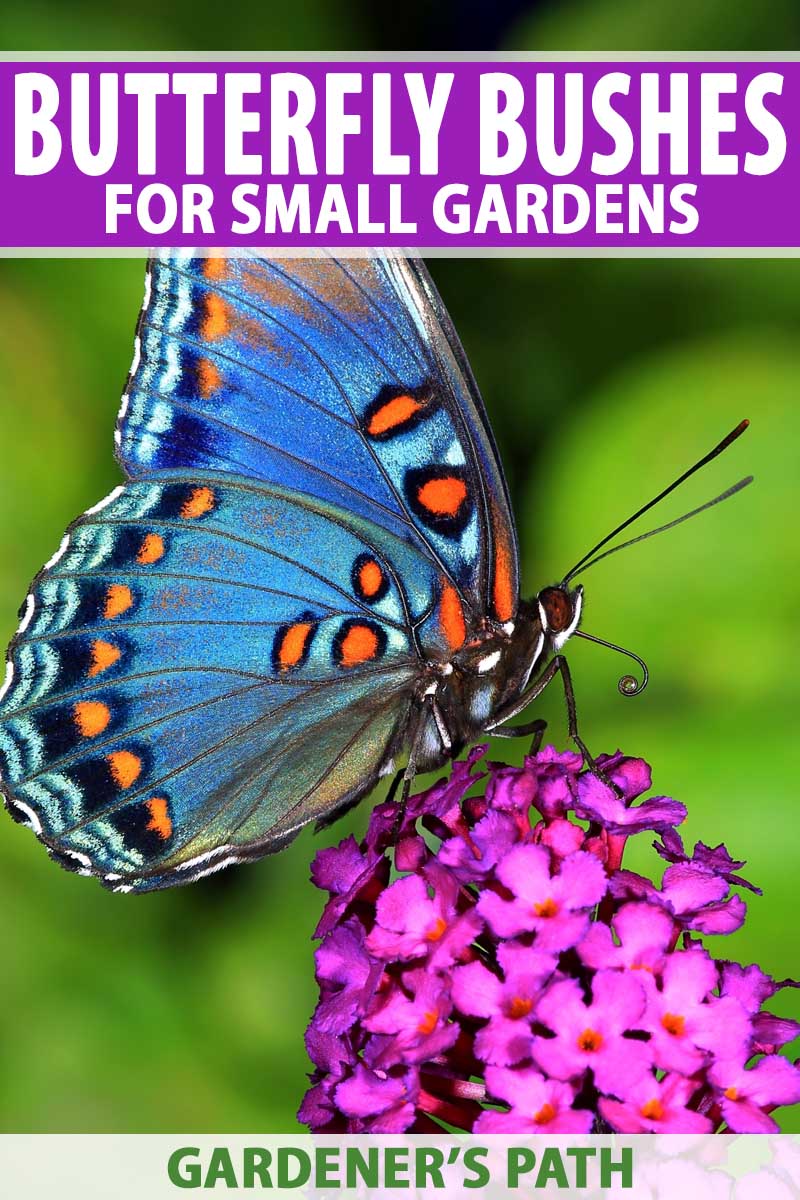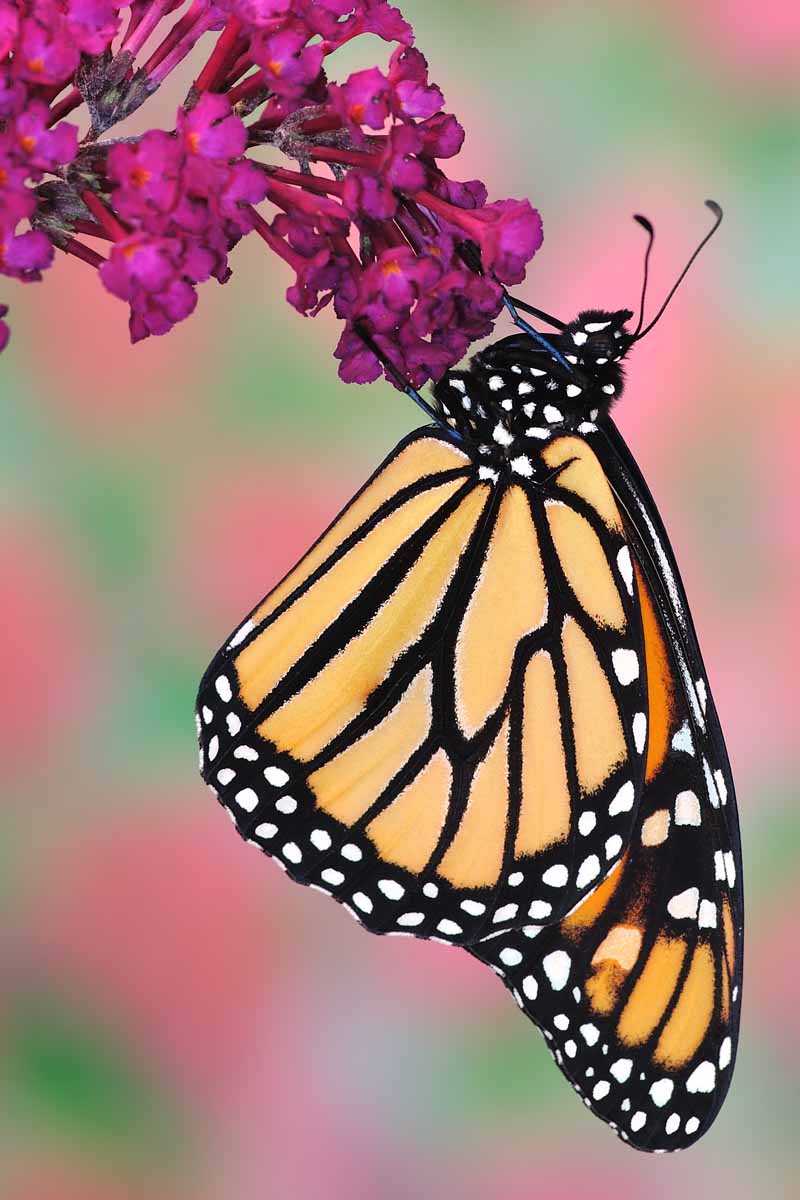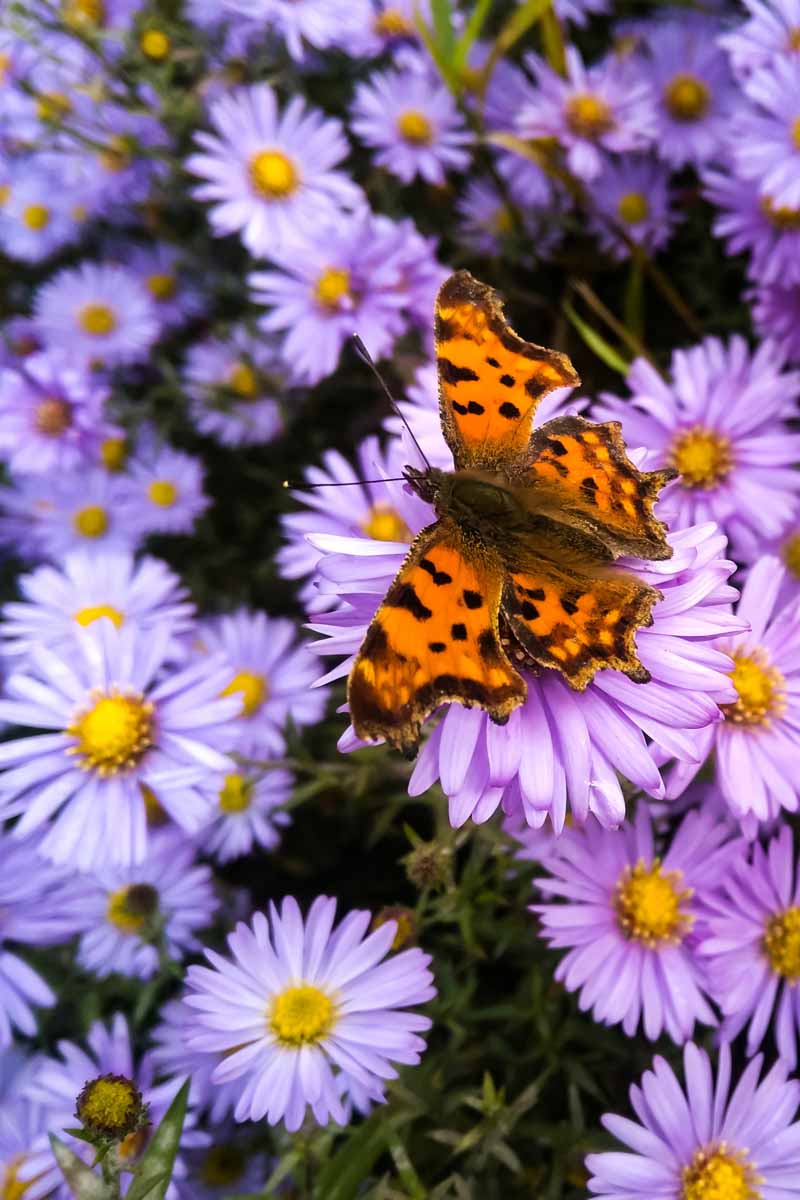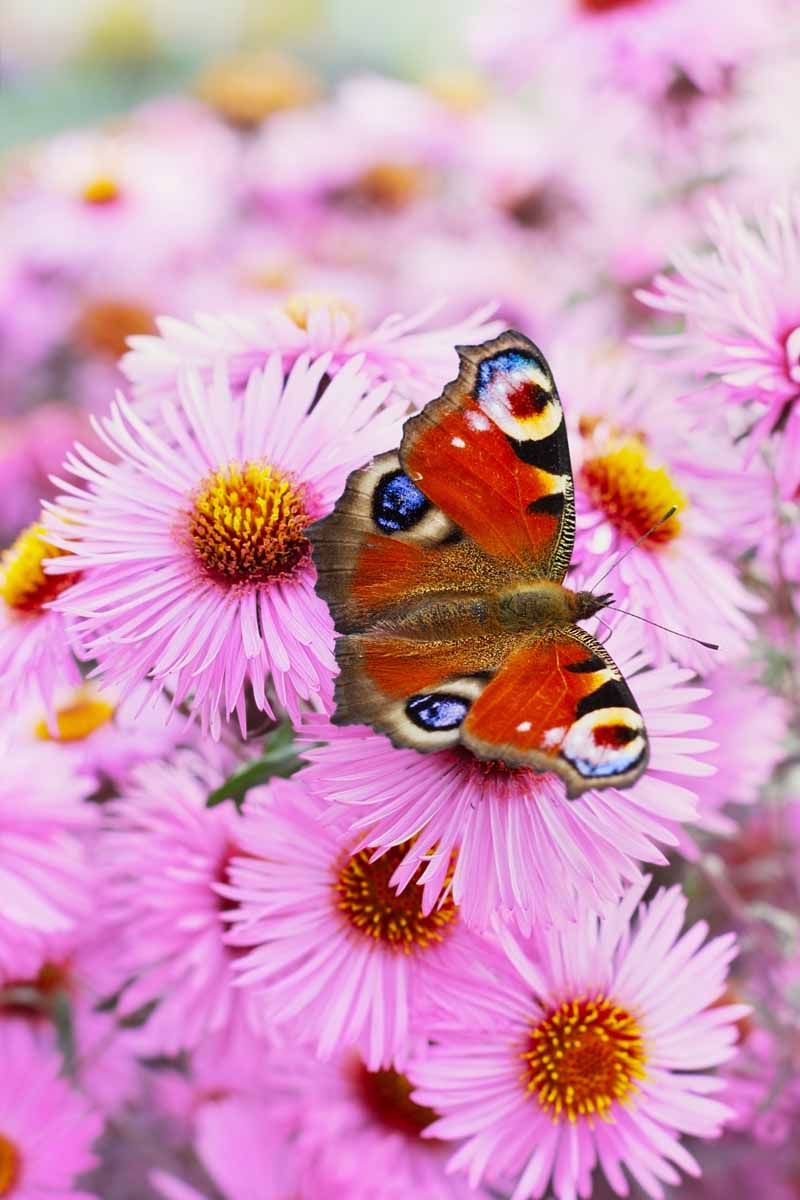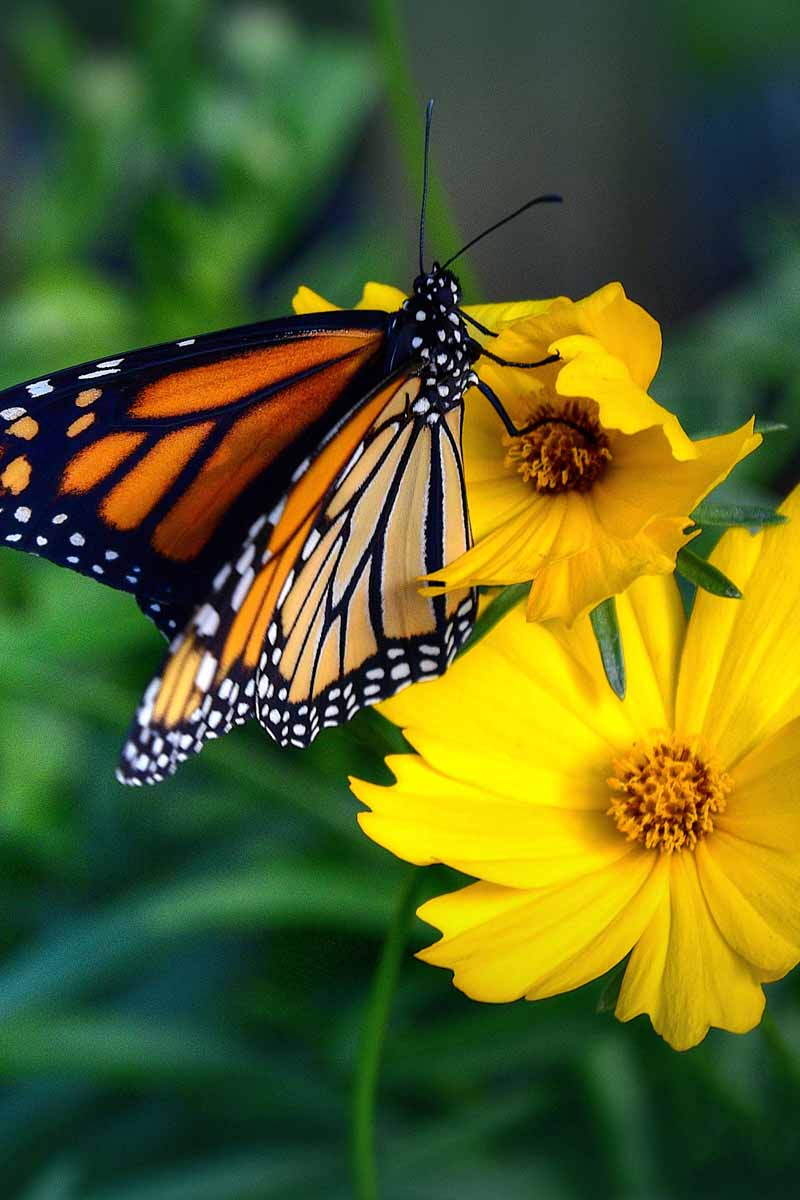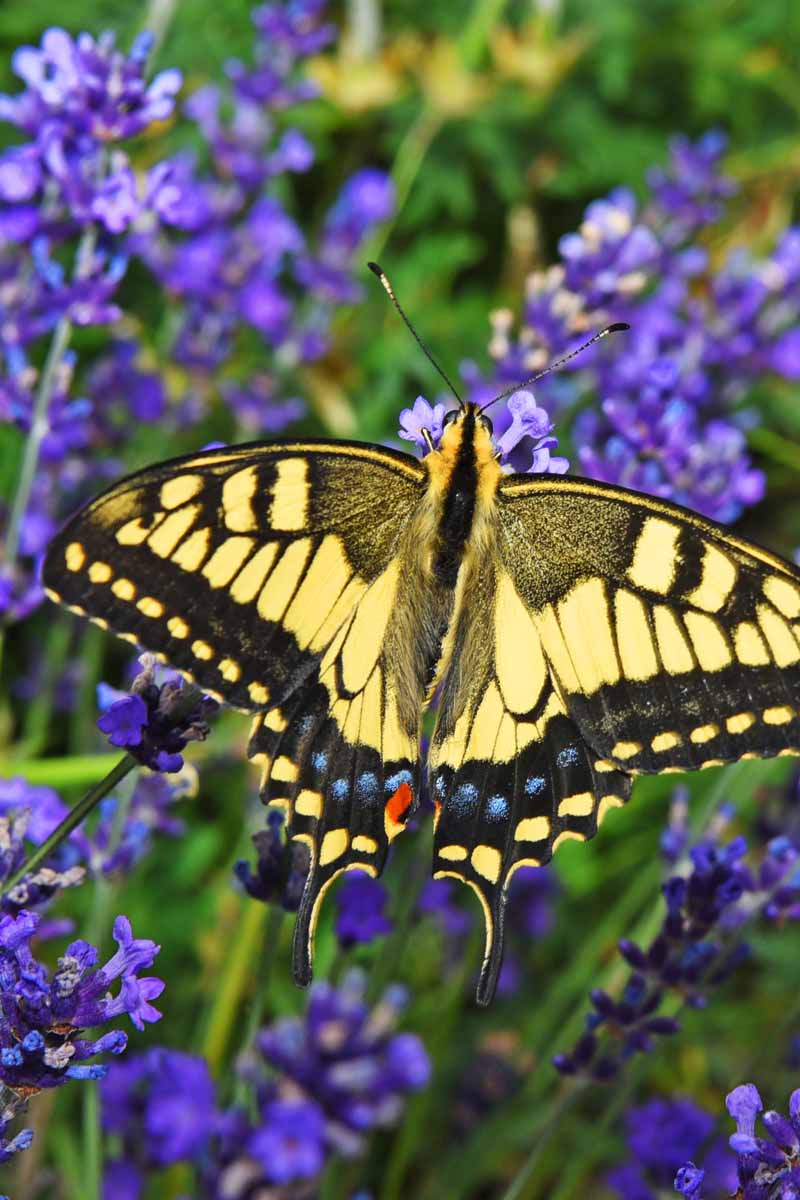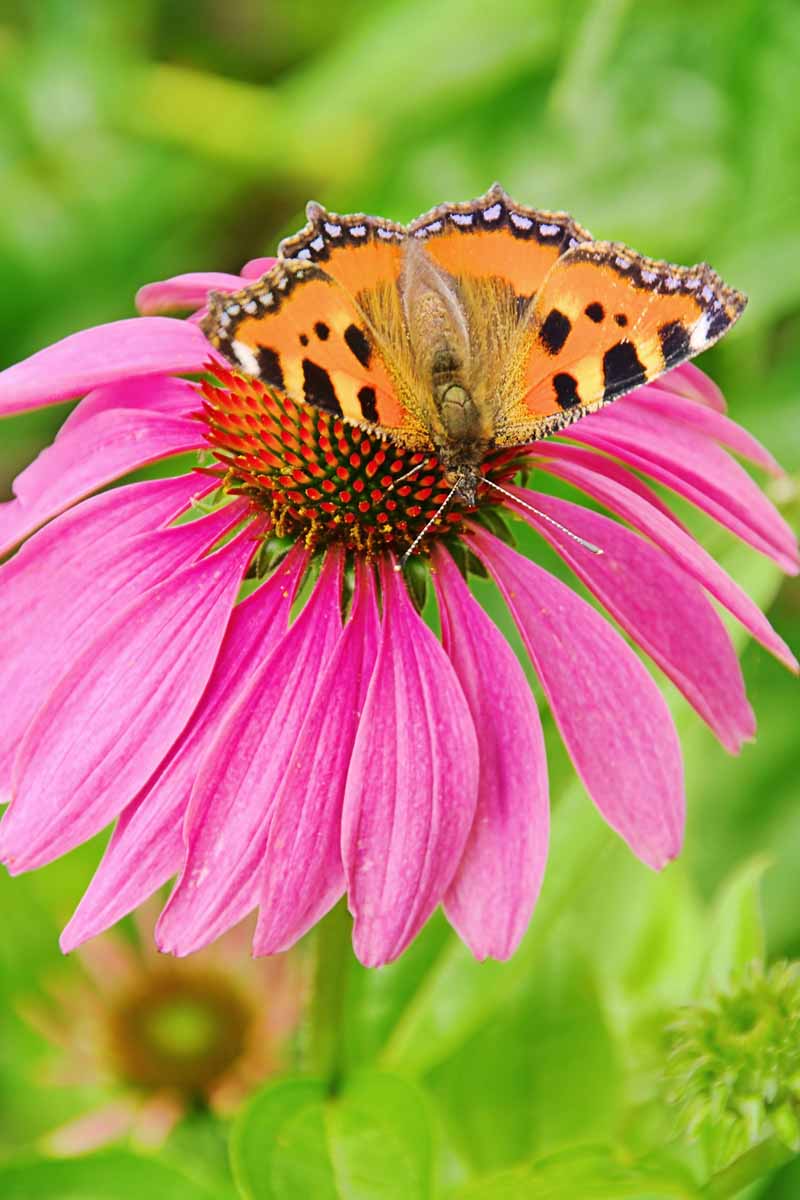One of the creatures gardeners sometimes like to attract is the butterfly. Its beautiful colors and ability to pollinate flowers are welcome attributes to most backyards. We link to vendors to help you find relevant products. If you buy from one of our links, we may earn a commission.
Buddleia Davidii
This is the common Butterfly Bush. It is a very large shrub, reaching a height of 6′ to 12′ if left on it’s own. With proper pruning, though, Buddleia davidii can stay a nice size for a small garden centerpiece. It tolerates most soils and even has a high tolerance for soils with high salt content. It’s a very hardy plant, has woody stems and keeps green leaves almost all year around. Its flowers are small and bloom in clusters. There are many different colors of Buddleia davidii ranging from purple, yellow, orange, and even to white. It likes partial sun to full sun and can survive with only light watering. It’s better to prune the bush in the winter after the plant has gone into hibernation so that when it comes back in the spring, it will be shorter and bushier. Read more about growing Buddleia bushes here.
Chrysanthemum
The is a native of Asia and a tropical perennial. They are easily propagated through seeds or cuttings. They love sun and can survive light droughts. The plant stays low to the ground, and so is perfect for a small garden or flower bed.
It has many single-stem flowers that are round and vary in color and pedal shape. Chrysanthemums are the second most popular flower from florists, and will make an excellent addition to any garden. They attract a large range of butterflies and provide a showy bit of color.
Aster
“Aster,” meaning “star,” refers to the shape of this plant’s blooms. There are many varieties of this plant in almost every color, so having different colors in the garden can be a snap with these flowers. Asters tolerate all hardiness zones and have been grown all over the U.S.
They are considered a type of wild flower and get no taller than around 1 foot. With so many colors to choose from, asters can create a diverse garden with little effort that is a hit for the local butterflies. We share our tips for growing New England aster, and China aster here.
Coreopsis
Coreopsis plants have flowers similar in shape to asters. They can also have color that is darker near the center of the bloom and brighter on the edges. They bloom in the summer months and tollerate zones 3-9, covering a wide range of yearly temperatures. The greenery on this plant is attractive, with thin, consistently green leaves. Most stores sell these from seeds or plant, so they can be easily found for the person who likes to start from seedlings and the person who may not have time for that. Surely, the butterflies will love this addition to the garden and the bright colors it brings, which range from white and scarlet to bright sun yellow.
Lavandula
The infamous lavender plant! It’s been added as fragrance for foods and homes for centuries, but has been attracting butterflies for even longer. This plant is hardy throughout all zones in the U.S. and also discourages pests in the garden. Not only do the flowers give off a lavender scent, the greenery does as well. It has many fragrant uses other than just to look pretty, but any garden can benefit from a little lavender here and there. The plant is often bushy and comes in a few varieties, so pick out the variety you think will fit into you garden the best. Some can be a low bush and some can be a little bit taller bush. Most people know about lavender being purple as there is even a color called “lavender,” however, the plant also has a “rose” variety that is pink. So you can pink up your garden or purple it out, and still attract many butterflies to it.
Echinacea
Echinacea, or purple coneflower has become popular now as an herbal supplement that helps improve the effectiveness of the immune system. But regardless of whether or not a person uses it for health benefits, there is no doubt that echinacea has been a popular addition to gardens for many years. Butterflies love this flower, and it is considered very hardy in almost all zones, with warmer zones even allowing for it to be a perennial.
This plant does get somewhat tall, its blooms rising on stalks from 2 feet to 2 1/2 feet off the ground, so it is best placed in the back of a small garden to add a bit of height. The plant does not crowd other flowers and grows up, not out. And despite being called a “purple” cone flower, echinacea does come in other colors, usually rich reds and even green. This plant is a highly recommended addition to the garden. With even these few to choose from, surely one or all of them can help you create a wonderful, compact garden that attracts beautiful butterflies all season long. All of the aforementioned varieties are well stocked in most local garden shops in most areas and definitely plentiful in online garden stores. Happy gardening and happy butterfly watching!
